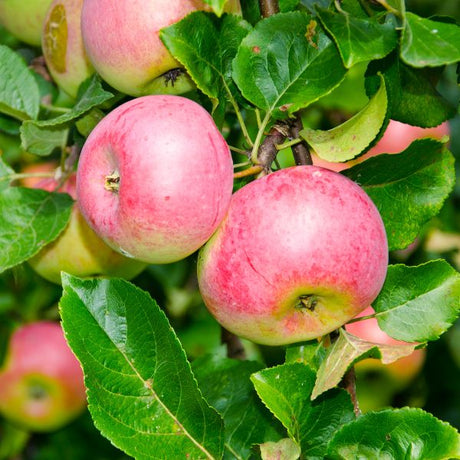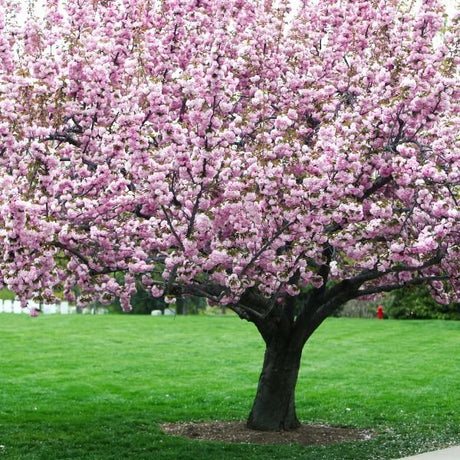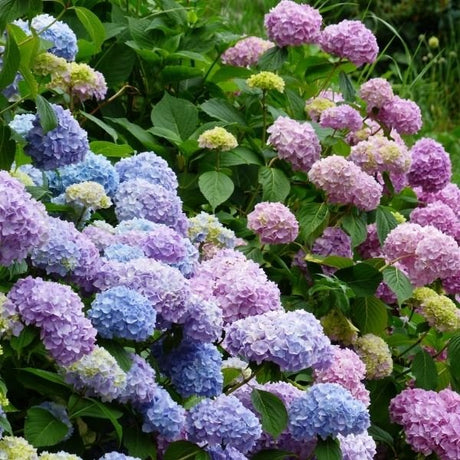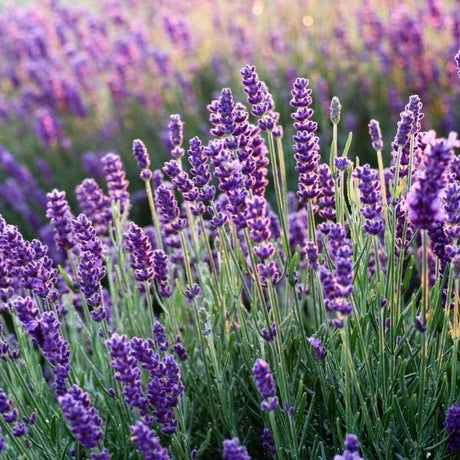Pennsylvania Gold Pawpaw Tree
- Stay Protected with Plant Sentry ™
Pennsylvania Gold Pawpaw Tree - #1 Container is backordered and will ship as soon as it is back in stock.
Plant Sentry™
Plant Sentry™
Plant Sentry is designed to protect both consumers and the nursery trade from invasive plant pests and diseases. Sites that display the Plant Sentry protection badge are protected from consumers buying and nurseries shipping material carrying invasive pests and diseases.
This proprietary eCommerce software prevents the shipment of a restricted plant to each state. The Plant Sentry system includes a shipment certification program. The Plant Sentry Compliance Officer works closely with NatureHills.com and each nursery or fulfillment center to ensure only compliant plants are sold to customers.
Click Here to learn more

Delivery and Shipping
Delivery and Shipping
Shipping
To obtain a more accurate shipment time-frame, simply enter your zip code in the “Find Your Growing Zone” box to the right. Our plants are grown all over the country and lead time on items may be different because of this. Once your order is placed, you will also receive the specific shipment time-frame information as part of your order confirmation. Once an item ships, you will receive shipment notification and tracking numbers, so you can follow along while your plant travels to your doorstep. We use FedEx, UPS, or USPS at our discretion.
Due to winter weather we have put a hold on shipping to the areas shown below in grey. You can still order now and we will ship the plant to you during an appropriate time for your zone.
Standard Shipping Rates
At Nature Hills we handle, package and ship the products you order with the utmost care to ensure healthy delivery. Shipping and handling charges are calculated based on the tables below. Please note that some items include an additional handling surcharge, these will be noted on the item's product page.
| From | To | S&H |
|---|---|---|
| $0 | $19.99 | $24.99 |
| $20 | $49.99 | $29.99 |
| $50 | $69.99 | $34.99 |
| $70 | $99.99 | $39.99 |
| $100 | $129.99 | $44.99 |
| $130 | $149.99 | $48.99 |
| $150 | $150+ | Approx 28% |
Click here to see our full rates
Buying Options for Plants
Nature Hills sells a large variety of plants with several options available. Plants are offered in both potted containers and as dormant bare root without soil. Here is a helpful resource to understand your options as you create a beautiful landscape with help from Nature Hills.
Ever wonder what a larger plant will mean for your landscape? Container Sizes are really all about the age of the plant!
Seasonally, Nature Hills offers hand selected, high quality bare root trees, shrubs and perennials. Bare root plants are sold by height from the top of the root system to the top of the plant. Plants may be taller than the height minimums.
- Popular sizes of select trees are 1 foot, 2 feet, 3 feet, etc.
- Popular sizes of select bare root plants is 1 foot, 18 inches, etc.
Nature Hills Container Size by Volume
Keep in mind, specific varieties and different growing conditions can affect the rate at which plants grow. Variations in size may occur.
| Young Plants to 18 Months | ||
|---|---|---|
| Size | Volume | |
| 2"x2"x3" | Ranges from | .18 to .21 dry quarts / .198 to .23 dry liters in volume |
| 4.5" Container | Equal to | .65 dry quart / .72 dry liter in volume |
| Sprinter Pot | Equal to | .63 dry quart / .69 dry liter in volume |
| 4" Container | Ranges from | .31 to .87 / .35 to .96 dry liter in volume |
| 6" Container | Equal to | 1.4 dry quarts / 1.59 dry liters in volume |
| 1 Quart | Equal to | 1 dry quart / 1.1 dry liter in volume |
| 5.5" Container | Equal to | 1.89 of a dry quart / 2.08 dry liters in volume |
| 4"x4"x5" | Ranges from | .8 to 1.1 dry quarts / .88 to 1.2 dry liters in volume |
| 4"x4"x6" | Ranges from | 1.0 to 1.3 dry quarts / 1.1 to 1.41 dry liters in volume |
| 4"x4"x9" | Ranges from | 1.1 to 2.1 dry quarts / 1.2 to 2.3 dry liters in volume |
| 4"x4"x10" | Ranges from | 1.7 to 2.3 dry quart / 1.87 to 2.53 dry liters in volume |
| Plants 18 Months - 2.5 Years Old | ||
|---|---|---|
| Size | Volume | |
| 2 Quart | Equal to | 2 dry quarts / 2.2 dry liters in volume |
| #1 Container | Ranges from | 2.26 to 3.73 dry quarts / 2.49 to 4.11 dry liters in volume |
| 5"x5"x12" | Equal to | 3.5 to 4.3 dry quarts / 3.85 to 4.74 dry liters in volume |
| Plants 2 - 4 Years Old | ||
|---|---|---|
| Size | Volume | |
| #2 Container | Ranges from | 1.19 to 1.76 dry gallons / 5.24 to 7.75 dry liters in volume |
| #3 Container | Ranges from | 2.32 to 2.76 dry gallons / 10.22 to 12.16 dry liters in volume |
| Plants 3 - 5 Years Old | ||
|---|---|---|
| Size | Volume | |
| #5 Container | Ranges from | 2.92 to 4.62 dry gallons / 12.86 to 20.35 dry liters in volume |
| #6 Container | Ranges from | 5.25 to 6.01 dry gallons / 23.12 to 26.42 dry liters in volume |
| #7 Container | Ranges from | 5.98 to 6.08 dry gallons / 26.34 to 26.78 dry liters in volume |
Plant Highlights
Pennsylvania Gold Pawpaw Tree highlights at a glance!
Specifications
Specifications
-
Brand
-
Botanical Name
-
Growing Zones
-
Mature Height
-
Mature Spread
-
Sun ExposureFull Sun
-
Moisture
-
Soil
-
Growth RateMedium
-
Fall Color
-
Pollinator Friendly
-
Pollinator Required
-
Fragrant
-
Pruning Time
-
Bloom PeriodEarly Spring, Late Spring
-
Harvest Time
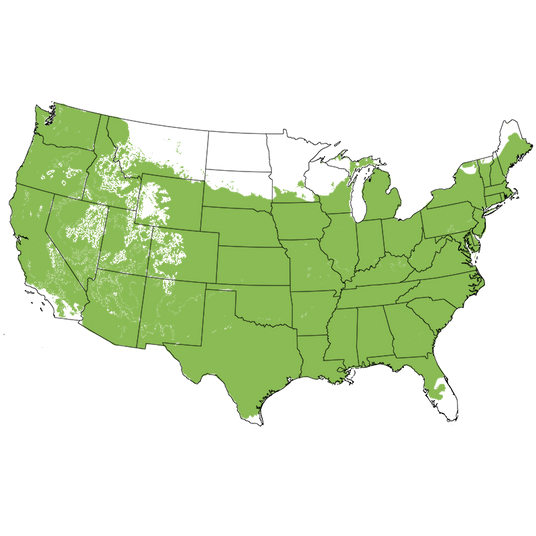
Growing Zones 5-9
The Pennsylvania Gold PawPaw Glows Golden Amongst Others
- Ripens Earlier Than Most Varieties
- Bears Heavily
- Disease Resistant
- Native Plant
- Delicious Flavor And Texture
The Pennsylvania Gold Pawpaw (Asimina triloba 'Pennsylvania Gold') will surprise you when you peel away the soft yellow skin and sink your teeth into the sweet, tropical-flavored flesh.
Native Americans knew for centuries that the Pawpaw is a delicious and nutritious fruit. For centuries, they gathered pawpaws and reaped the benefits of the nutrient-loaded flesh. It is about time that you added a Pennsylvania Gold Pawpaw to your yard or garden
If you like sweet, custardy fruit, then the Pennsylvania Gold Pawpaw is calling your name. Its deep golden yellow pulp melts in the mouth and is very nutritious. These pawpaws are oval-shaped and grow to about half a pound, and when you take a bite, you will notice hints of mango, banana, and pineapple flavor.
If you haven't experienced pawpaw in the past, not only will you be thrilled when you eat them chilled from the refrigerator, but you can cook them into quick bread, custards, cookies, cakes. They make delicious ice cream as well as pudding and smoothies. Bring a taste of the tropics to your garden, and plant a Pennsylvania Gold Pawpaw.
In the spring, this lovely tree produces pretty dark red to purple blossoms, that hang like bells from the Pennsylvania Gold Pawpaw's branches. You will see hummingbirds and butterflies flying around your tree, enjoying the blossoms too. You will need to plant a partner that is not genetically the same in order to get your tree to produce fruit.
While it takes the Pennsylvania Gold Pawpaw longer to bear fruit than some varieties, you will be happy that you waited when you see how much your tree produces and how delicious the fruit is. It is a smaller tree that you can use as part of your edible landscaping, and since pawpaws produce their own insecticide, you won't be bothered by disease or insects.
Pennsylvania Gold Paw Paws are cold hardy down to -20 degrees and grow well in the shade, but plant it in a sunny spot for the best yields. You might have to protect the tree while it is young from strong sunlight since it is accustomed to growing under large trees in American forests.
Your Pennsylvania Gold Pawpaw will grow well in most types of soil, but it prefers well-drained loam that is slightly acidic.
Why wait? Put a Pennsylvania Gold Pawpaw in your cart, along with a partner, and you will discover what Native Americans have known for millennia.
The Pennsylvania Gold PawPaw Glows Golden Amongst Others
- Ripens Earlier Than Most Varieties
- Bears Heavily
- Disease Resistant
- Native Plant
- Delicious Flavor And Texture
The Pennsylvania Gold Pawpaw (Asimina triloba 'Pennsylvania Gold') will surprise you when you peel away the soft yellow skin and sink your teeth into the sweet, tropical-flavored flesh.
Native Americans knew for centuries that the Pawpaw is a delicious and nutritious fruit. For centuries, they gathered pawpaws and reaped the benefits of the nutrient-loaded flesh. It is about time that you added a Pennsylvania Gold Pawpaw to your yard or garden
If you like sweet, custardy fruit, then the Pennsylvania Gold Pawpaw is calling your name. Its deep golden yellow pulp melts in the mouth and is very nutritious. These pawpaws are oval-shaped and grow to about half a pound, and when you take a bite, you will notice hints of mango, banana, and pineapple flavor.
If you haven't experienced pawpaw in the past, not only will you be thrilled when you eat them chilled from the refrigerator, but you can cook them into quick bread, custards, cookies, cakes. They make delicious ice cream as well as pudding and smoothies. Bring a taste of the tropics to your garden, and plant a Pennsylvania Gold Pawpaw.
In the spring, this lovely tree produces pretty dark red to purple blossoms, that hang like bells from the Pennsylvania Gold Pawpaw's branches. You will see hummingbirds and butterflies flying around your tree, enjoying the blossoms too. You will need to plant a partner that is not genetically the same in order to get your tree to produce fruit.
While it takes the Pennsylvania Gold Pawpaw longer to bear fruit than some varieties, you will be happy that you waited when you see how much your tree produces and how delicious the fruit is. It is a smaller tree that you can use as part of your edible landscaping, and since pawpaws produce their own insecticide, you won't be bothered by disease or insects.
Pennsylvania Gold Paw Paws are cold hardy down to -20 degrees and grow well in the shade, but plant it in a sunny spot for the best yields. You might have to protect the tree while it is young from strong sunlight since it is accustomed to growing under large trees in American forests.
Your Pennsylvania Gold Pawpaw will grow well in most types of soil, but it prefers well-drained loam that is slightly acidic.
Why wait? Put a Pennsylvania Gold Pawpaw in your cart, along with a partner, and you will discover what Native Americans have known for millennia.


